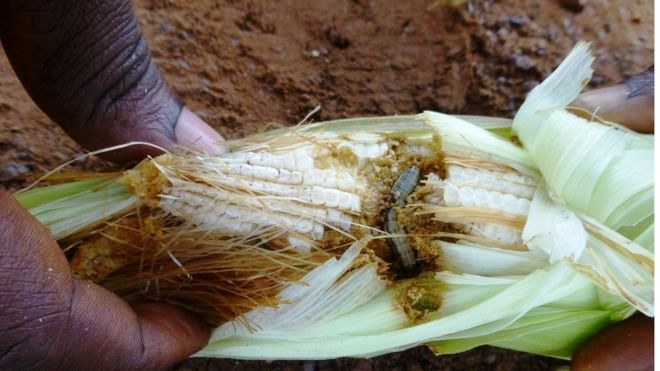The Food and Agriculture Organization of the United Nations last week launched a mobile app to combat the fall armyworm menace that has been reported in 44 out of 54 Sub-Saharan African countries including Kenya.
A research body, the Center for Agriculture and Biosciences International (CABI) has warned that the African continent stands to lose between eight and 20m tonnes of maize in 2018 if the pest is not properly managed.
The pest feeds on more than 80 crops, but prefers maize and can cut yields by up to 60 per cent. The female lays up to 1,000 eggs in her lifetime and can fly 100km per night.
Related
Control fall armyworms with this simple procedure
Africa faces permanent $2bn+ maize deficit if Fall Armyworm poorly managed
Fall Armyworm Status: Impacts and control options in Africa
The app which runs android smartphones according to FAO will help farmers, researchers and donors better understand the threat posed by the pest.
With the app, farmers can check for the level of infestations in their farm by examining 10 plants in a row in different locations of their farm. In this, the app would enable them mark whether or not the fall armyworm larvae is present in their crops.
The sample data collected will then be uploaded to FAO’s servers where it can be analyzed by researchers, said Keith Cressman, the lead person who developed the app.

The fall armyworm pest attack on maize
A majority of farmers in Kenya may be able to use the app as the latest report released in March 2018 by e-commerce company Jumia shows that the country has a high adoption rate of smart phones in Africa with the internet penetration at 83 per cent.
In Kenya, the fall armyworm was first detected in Western Kenya in March 2017 and was confirmed by the Kenya Agricultural and Livestock Research Organization and the Kenya Plant Health Inspectorate Service.
The initial affected counties were Busia, Uasin Gishu, Trans Nzoia, Bungoma, Bungoma and Nandi. By the end of the year 2017, the pest had ravaged approximately 800,000 hectares of crops.
There are also other alternative ways of managing the pest according to FAO. One of them is by field visits to the farm to confirm the status of the crops under cultivation. In this case, a farmer can check for signs and presence of the worm and take action by crushing the eggs and larvae.
Farmers can also conserve and enhance ants in their farms as the insects are important FAW predators.
















Comments powered by CComment